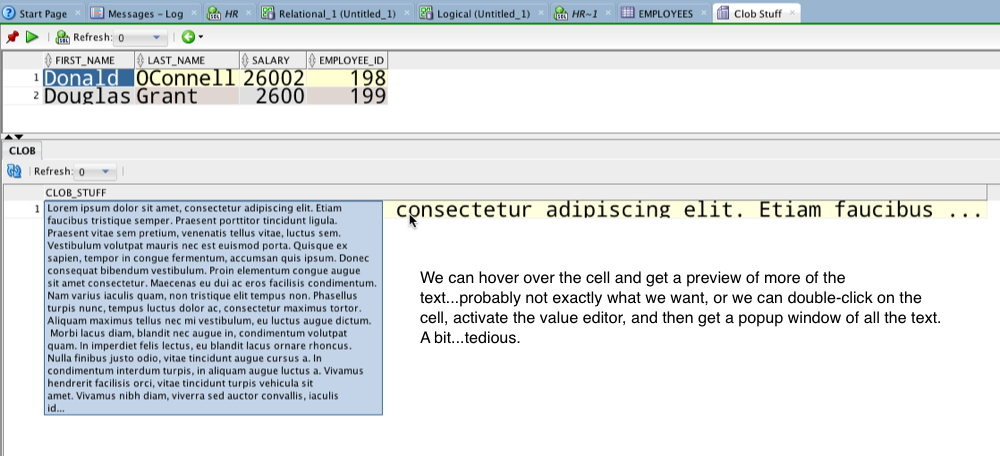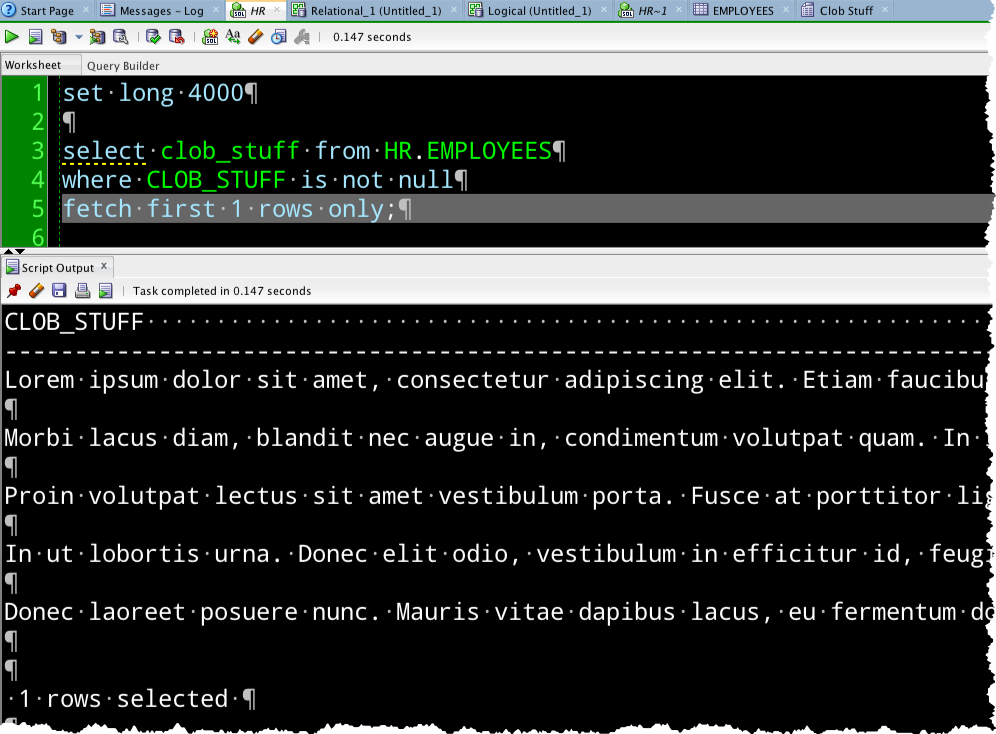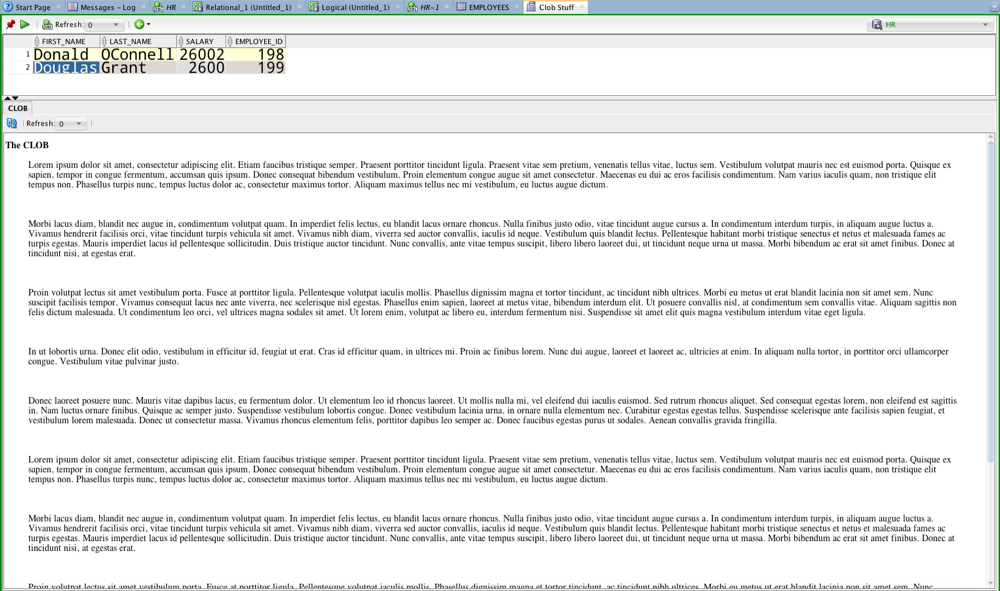A co-worker asked me for some advice on building a report to view some CLOBs.
CLOBs are fun. They let you store an unlimited (basically) amount of text. They’re not as flexible as VARCHAR2s, but they do come in handy.
Viewing them in a report can get interesting though.
The question came down to seeing a report like this –

I suggested to my co-worker to use the SCRIPT type report instead.
But then they noticed they only got the first 80 chars.
Well, that’s easily fixed.
SET LONG 4000 [DOCS] — we default to 80 chars…

WE CAN DO BETTER
So let’s use a trick.
Instead of using a child report of type SCRIPT, we’re going to use a DBMS_OUTPUT report. We’re going to print HTML tags, and make the CLOB look pretty. Or more pretty. Or prettier?

What the child report looks like.

Remember, the REPORTS feature is awesome. You have a few different ways to get what you want. We can render basic HTML tags. A few minutes of work will save you hours of time and tons of eye strain and repetitive stress injuries down the road. And lastly, you can SHARE your reports very easily.





2 Comments
How does SQL Developer display CLOB objects so fast, what query does it perform?
We’re just leveraging what the JDBC driver gives us. You can see the queries we use in the Statements Log panel.